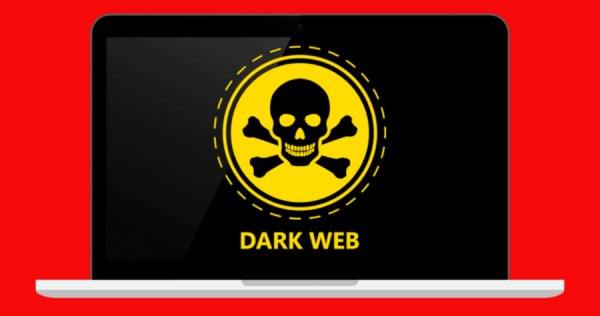In an era marked by rapid digitization and technological advancement, the reliance of businesses on the digital realm has reached unprecedented levels. While this digital interconnectedness offers manifold benefits, it also exposes organizations to a host of cyber threats that linger within the shadows of the virtual world. One such menacing threat is the dark web – a hidden enclave of the internet where illegal activities and cybercriminal operations thrive. In response, the practice of dark web monitoring has emerged as a pivotal cybersecurity strategy, transcending organizational size and sector. This proactive approach offers a robust defense mechanism against potential breaches, data leaks, and the far-reaching implications of cybercriminal activities.
Understanding the Dark Web
- Unmasking the Veiled Realm
To comprehend the significance of dark web monitoring, one must first grasp the intricacies of the dark web itself. Beneath the surface layers of the internet lies a concealed underbelly known as the deep web, of which the dark web is a clandestine subdivision. This digital subterfuge is intentionally obscured from conventional search engines and requires specialized tools like Tor (The Onion Router) to access. Tor provides users with a cloak of anonymity, enabling them to operate in a covert environment.
- A Breeding Ground for Illicit Activities
The dark web serves as a haven for a multitude of nefarious activities. Cybercriminals engage in a thriving trade of stolen data, hacking tools, drugs, counterfeit currencies, and more. Identity theft, credit card fraud, and the sale of sensitive corporate information constitute just a fraction of the illicit exchanges that transpire within these shadowy recesses.
Dark Web Monitoring Defined
- Vigilance Beyond the Surface
Dark web monitoring is a proactive cybersecurity practice that involves vigilant scanning and surveillance of the dark web's hidden corners. This scrutiny is directed towards identifying any mentions, discussions, or listings that pertain to a company's name, domains, products, or personnel.
- Early Threat Detection
By promptly identifying potential threats at their inception, dark web monitoring empowers organizations to initiate proactive countermeasures before cybercriminals exploit vulnerabilities and escalate their attacks.
The Imperative Role in Today's Digital Landscape
- Mitigating the Perils of Data Breaches
As high-profile data breaches continue to make headlines, dark web monitoring presents a preemptive strategy to mitigate such risks. By thwarting breaches and the subsequent fallout, companies can avert both reputational damage and financial losses.
- Safeguarding Sensitive Information
Modern businesses are entrusted with an array of sensitive information, from proprietary data and trade secrets to customer details. Dark web monitoring serves as an impregnable barrier, preventing the exposure of critical information to malevolent actors.
- Nurturing Brand Resilience
The fallout from a singular data breach can reverberate across an organization, irreparably tarnishing its reputation. Dark web monitoring becomes a stalwart guardian, ensuring that leaks are detected and contained, thereby preserving the brand's integrity and fostering consumer trust.
- Compliance and Legal Obligations
Numerous industries are bound by stringent compliance regulations governing data protection. Dark web monitoring becomes an instrumental tool in fulfilling these obligations, ensuring adherence to legal frameworks and evading potential legal ramifications.
Implementing Dark Web Monitoring
- Collaboration with Cybersecurity Experts
To navigate the complexities of dark web monitoring, organizations are well-advised to enlist the expertise of cybersecurity specialists. These professionals possess the acumen to provide comprehensive coverage and accurate threat assessments.
- Uninterrupted Surveillance
In a landscape characterized by persistent and ever-evolving cyber threats, continuous dark web monitoring is imperative. By perpetually scanning the digital shadows, companies can swiftly identify and address emerging risks.
Benefits of Dark Web Monitoring
- Anticipating Threats Proactively
Dark web monitoring bestows the ability to identify and pre-empt potential threats before they escalate into full-scale attacks. This proactive approach aids in the timely deployment of defensive strategies, preserving the sanctity of an organization's digital infrastructure.
- An Early Warning Sentinel
Serving as a sentinel of early warnings, dark web monitoring empowers companies to remain a step ahead of cybercriminals. By staying abreast of emerging threats, organizations can fortify their cybersecurity measures and avert potential breaches.
- Mitigating Financial Ramifications
The prevention of data breaches translates into substantial financial savings that would otherwise be expended on remediation and recovery efforts. Dark web monitoring thus emerges as a cost-effective investment in safeguarding an organization's fiscal health.
- Augmented Customer Confidence
The protection of customer data and the prevention of breaches foster an environment of trust and confidence. Through these measures, companies can cultivate enduring customer relationships built on the foundation of data security.
Examples and Evidence:
- Early Detection of Planned Attacks:
- Example: A major financial institution detected discussions on the dark web about an upcoming cyberattack targeting its infrastructure.
- Evidence: This early warning allowed the organization to fortify its defenses and thwart the attack before any damage occurred, as reported by cybersecurity firm Digital Shadows.
- Preventing Data Breaches:
- Example: Equifax, a credit reporting agency, suffered a massive data breach in 2017 that exposed sensitive personal information of over 143 million individuals.
- Evidence: Dark web monitoring could have potentially identified the compromised data on the dark web before it was misused, preventing the extensive financial and reputational fallout that followed.
- Safeguarding Trade Secrets:
- Example: A manufacturing company's proprietary designs for cutting-edge products were discovered on the dark web.
- Evidence: Dark web monitoring enabled the company to take swift legal action against the illicit distribution of its trade secrets, protecting its competitive advantage and innovation.
- Minimizing Insider Threats:
- Example: An employee from a healthcare organization attempted to sell patient medical records on the dark web.
- Evidence: Dark web monitoring flagged this illegal activity, allowing the organization to swiftly terminate the employee and prevent the sale of sensitive patient data.
- Preserving Brand Reputation:
- Example: Following a data breach, a retail company's customer credit card information was found being sold on the dark web.
- Evidence: The company's proactive response, aided by dark web monitoring, allowed them to contain the breach, notify affected customers, and mitigate the damage to their brand reputation.
- Meeting Regulatory Requirements:
- Example: A financial institution failed to comply with GDPR regulations, resulting in a substantial fine and reputational damage.
- Evidence: Dark web monitoring could have helped the company detect potential data leaks earlier, allowing them to address the breach and adhere to regulatory requirements.
- Defending Against Ransomware Attacks:
- Example: A city government was targeted by a ransomware attack that encrypted critical systems and demanded a ransom.
- Evidence: Dark web monitoring uncovered discussions about the attack on the dark web, enabling authorities to respond promptly, contain the attack, and avoid paying the ransom.
- Monitoring Employee Exposure:
- Example: An employee inadvertently shared confidential company information online, making it susceptible to exploitation on the dark web.
- Evidence: Dark web monitoring identified the exposed data, enabling the company to take corrective actions and mitigate potential risks.
- Protecting Intellectual Property:
- Example: A technology startup's source code was discovered on the dark web, potentially undermining its unique software offering.
- Evidence: Dark web monitoring alerted the startup to the compromised source code, allowing them to address the issue and secure their intellectual property.
- Fraud Prevention and Financial Security:
- Example: A banking institution learned of discussions on the dark web about a planned cyberattack to compromise its customers' accounts.
- Evidence: By acting swiftly on the information obtained through dark web monitoring, the bank prevented the attack and safeguarded its customers' financial assets.
Conclusion
In the ever-evolving realm of cybersecurity, the importance of dark web monitoring shines brightly as a beacon of defense against the shadows of the digital underworld. The examples and evidence presented vividly illustrate its indispensable role in safeguarding businesses and organizations across diverse sectors. Dark web monitoring, as exemplified by real-world instances, offers a shield against imminent threats, a sentinel of early warnings, and a fortress of data protection.
The proactive detection of planned cyberattacks, showcased by instances like the financial institution's preemptive defense, demonstrates how vigilance beyond the surface can foil malicious intentions before they manifest. Preventing data breaches, as demonstrated by Equifax's unfortunate incident, underscores how a robust dark web monitoring strategy can save companies from the dire consequences of compromised information.
Safeguarding trade secrets, minimizing insider threats, and preserving brand reputation, as evidenced by various scenarios, further underscore the dynamic capabilities of dark web monitoring. Meeting regulatory requirements, averting ransomware attacks, and monitoring employee exposure underline its versatility in addressing multifaceted cybersecurity challenges.
As digital guardians ourselves, digiALERT recognizes the undeniable need for proactive measures in the face of an increasingly sophisticated and relentless cyber landscape. The real-world examples and evidence showcased in this discourse illuminate the path toward a safer digital future. By embracing dark web monitoring, organizations can elevate their cybersecurity posture, empower their incident response, and cultivate an environment of trust, both within their ranks and among their valued clientele.
In the end, the realm of cybersecurity is ever-evolving, and the dark web remains an enigmatic frontier. But armed with the insights and lessons learned from these tangible scenarios, we stand united in our commitment to illuminating the darkest corners of the digital realm and fortifying our digital world against the perils that lie within. Together, we usher in a new era of digital resilience, safeguarding our interconnected future with the unwavering vigilance of digiALERT.







